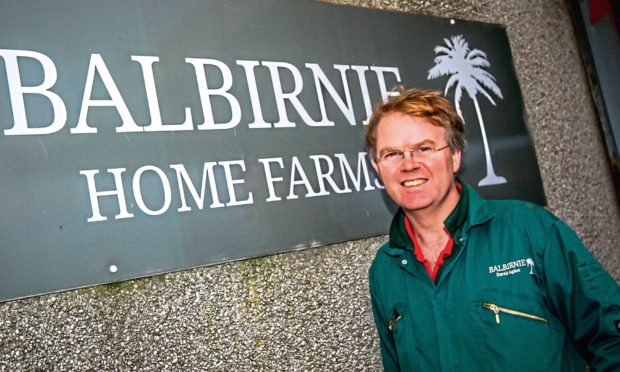A Fife farm manager hopes to prove the benefits of using the Brix meter – a measure of the sugars in a plant – to drive crop nutrition decisions in a series of on-farm trials.
David Aglen, farm manager at Balbirnie Home Farms, will carry out tramline-scale trials using the Brix meter as part of the farm’s involvement in levy body AHDB’s strategic farms network.
“We are going to measure Brix throughout the season on a crop of winter wheat. This is a measure of the soluble solids in the plant sap,” said Mr Aglen.
He said a Brix refractometer, which involves measuring the liquid from a sample of plant tissue, will determine the sugar and nutrient density of the plant.
“The higher the reading the better,” Mr Aglen added.
“If the level drops below a certain number, which we need to decide, we will test the plant tissue and see what it is lacking.”
He said information from both the Brix meter testing and tissue sampling would drive decisions on plant nutrition for the crop involved in the trial throughout the growing season.
Other aims of the farm’s involvement in the six-year AHDB strategic farms project would be to look at regenerative agriculture and farming in a way more in tune with the environment, said Mr Aglen.
He added: “All my life, and for generations before, all we have done is open a bag and chuck it on a field, but it’s becoming apparent that we have done some pretty horrendous things to the soil.”
He said he hoped to showcase a “prevention is better than cure” approach to crop nutrition by reducing reliance on fungicides and keeping crops healthy through nutrition.
“It would be good to demonstrate that you don’t need to reach for the artificial products first.”
He added: “If we are not using them there’s less pressure on polluting the environment, less damage to the environment and perhaps better-quality food coming as a result.”
He stressed he was not proposing a move to organic production, but instead a move to reducing the industry’s reliance on synthetic inputs.
“As an industry we need to stick together far more,” said Mr Aglen.
“We need to be doing the research on-farm and sharing the results with our peers.
“This is something where the farmers are going to have to fund it through AHDB. The biggest winners out of this could be the producers ourselves.”
Balbirnie is a 3,000-acre mixed unit with almost 2,000 acres of arable cropping as well as a 170-cow suckler herd of mainly Simmental cross cattle. Cropping includes malting barley, wheat, winter and spring oats, and a small amount of oilseed rape.







